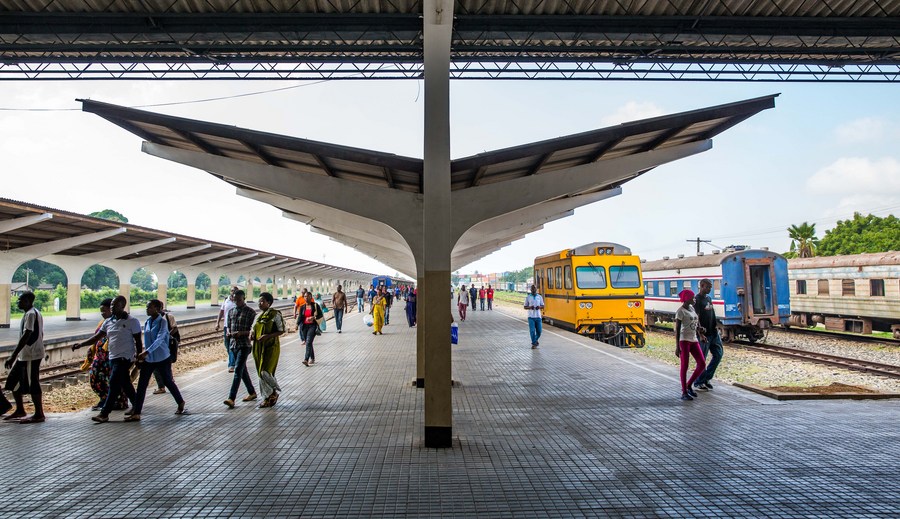
A section of the Nairobi Expressway built by China Road and Bridge Corporation in Nairobi, Kenya, May 8, 2022. /Xinhua
A section of the Nairobi Expressway built by China Road and Bridge Corporation in Nairobi, Kenya, May 8, 2022. /Xinhua
Editor's note: Andy Mok is a research fellow at the Center for China and Globalization. The article reflects the author's opinions and not necessarily the views of CGTN.
In today's rapidly changing world, it is crucial to understand the historical context and motivations behind the actions of global powers. One such example is China's long-standing commitment to foreign aid, which dates back to the very foundation of the People's Republic of China.
Delving into the past, the present, and the future of China's foreign aid sheds light on China's development trajectory, its foreign policy objectives, and its global impact. By examining how China has provided assistance to other developing countries in different historical periods, we can gain insights into China's domestic challenges, international relations, and global vision.
By analyzing how China has adapted its foreign aid strategies to changing circumstances, we can appreciate China's pragmatism, flexibility, and innovation. And by evaluating how China has contributed to the global development agenda, we can assess China's role and responsibility as a rising power.
In 1950, under the leadership of the late Chinese leader Mao Zedong, China was a newly established nation facing a myriad of domestic and international challenges. On the domestic front, China had to cope with the aftermath of a civil war that had divided the country as well as the Japanese invasion which left millions dead or displaced and a legacy of foreign domination and exploitation, which had weakened its sovereignty and economy. On the international front, China had to confront the hostility of the United States and balance its relations with the Soviet Union.
Despite facing so many challenges and being underdeveloped, China still provided foreign aid to other developing countries. These external assistance programs included military and food assistance to DPRK and Vietnam to support their struggles against U.S. and French military forces, respectively, in the early 1950s.
China also extended economic and technical assistance to other Asian and African countries that were seeking independence from colonial rule or pursuing socialist development. China's foreign aid in this period was motivated by a combination of ideological solidarity, diplomatic recognition, and strategic interests.
Since then, China's foreign aid has evolved with its changing domestic and international circumstances. After the reform and opening up in 1978, China shifted its emphasis from ideology to pragmatism, and from self-reliance to interdependence. China's foreign aid became more diversified, flexible, and market-oriented.
China also increased its cooperation with multilateral institutions and other aid providers. China's foreign aid at this stage was driven by a mix of economic benefits, political influence, and global responsibility. For example, China helped build the Tanzania-Zambia Railway in the 1970s, joined the World Bank and the Asian Development Bank in the 1980s, and launched the Forum on China-Africa Cooperation in the 2000s.

Passengers leave a train after arriving at the Dar es Salaam station of Tanzania-Zambia Railway in Dar es Salaam, Tanzania, February 14, 2019. /Xinhua
Passengers leave a train after arriving at the Dar es Salaam station of Tanzania-Zambia Railway in Dar es Salaam, Tanzania, February 14, 2019. /Xinhua
In recent years, under the guidance of the 'Belt and Road Initiative (BRI) and Global Development Initiatives (GDI), China has continuously deepened its cooperation with relevant countries and strengthened its assistance in infrastructure construction, technology and experience sharing.
A 2022 IMF report pointed out that China's aid has promoted the social and economic development of the receiving countries. China's foreign aid in this stage is influenced by a variety of factors, such as national interests, global governance, public opinion, and recipient needs.
China's achievements in foreign aid are impressive, but there are also some opportunities for improvement. For example, China could further enhance the transparency of its aid programs, strengthen coordination and communication with other stakeholders, further address the environmental and social impacts of its projects, and more proactively address the debt sustainability concerns of some recipient countries. These measures would not only benefit the recipients but also further enhance China's reputation and credibility as a responsible foreign aid provider.
China has come a long way as a provider of foreign aid. Its foreign aid reflects its historical legacy, current reality, and future vision. As a developing country itself, China understands intimately the needs and aspirations of other developing countries. As a rising power, China also recognizes its role and obligations in global affairs. As a partner for development, China is willing to share its experience and resources with others.
China's foreign aid is not only an expression of its national interests but also a manifestation of its global citizenship and ability to adapt to evolving global needs and opportunities.
(If you want to contribute and have specific expertise, please contact us at opinions@cgtn.com. Follow @thouse_opinions on Twitter to discover the latest commentaries in the CGTN Opinion Section.)